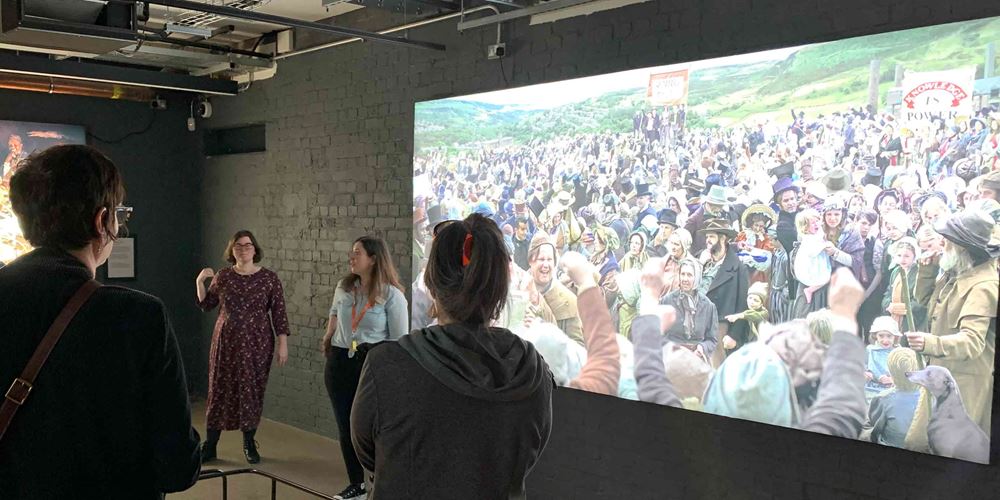Heritage and climate change

We cannot understand today’s climate emergency without understanding the historical journey that has brought us to this point. As historians, we’re constantly asked to relate past events to the present day. But how can we do this for climate change in the UK? And how can we inspire people to action?
Supporting the work of Fulbright Specialist Donna Graves on her recent visit gave me the opportunity to contemplate how historians and the heritage industry can approach what traditionally has been seen as a scientific issue.
Hope
In the United States, Donna has been working on a toolkit ‘History and Hope: Interpreting the Roots of Our Climate Emergency and Inspiring Action’ for the US National Park Service. Hope can be a very powerful tool, providing a positive message that there is still time to make a difference in the fight against climate change.
In May 2022, Donna and I attended the ‘Talking About Climate Change and Inspiring Action’ roundtable, organised by the University of Derby. When taking part in a discussion with industrial heritage site representatives from the Derwent Valley Mills UNESCO World Heritage Site in Derbyshire, I was reminded that these sites were awarded this status because they represent human ingenuity and imagination in overcoming a specific situation, in this case, how can we turn running water into power?
Stories which emphasise humanity’s ability to think about and then tackle problems must be the cornerstone of how heritage sites can interpret stories of climate change. They offer hope that something still can be done and, perhaps, someone who once read about the water-powered mills at Cromford or Belper on a visit to the Derwent Valley might just be inspired to be the person to make that next innovation.
Conflict
Not every site, however, has a positive story of climate change to tell. The historical process of industrialisation in the UK undoubtedly involved the exploitation of people, of land and of resources.
This poses its own set of questions. How, for instance, do we tell stories of climate change at the sites of former carbon contributors, such as coal mines? As Dr Sarah Lloyd from the Institute of Historical Research has commented, this process is not about ‘cancelling’ people or shaming local people for having pride in their industrial heritage but thinking about multiple narratives and finding a basis for shared action within them.
It is not a case of telling this story or that story, but rather allowing for conflicting narratives to share the same heritage space, sitting side-by-side and complementing one another.
Collaboration
From what I saw in Derby there is a real appetite for collaboration on the topic of climate change in the UK heritage sector. The event brought together representatives not only from local sites but also national institutions such as Historic England and the National Trust.
Some of the sites present, despite only being a few miles from one another in the same river valley, rarely get the opportunity to talk to one another. By getting them together in a room with each other, and with national bodies, the conversation about heritage and climate change was widened.
What next?
Hopefully this event has set a template for meaningful discussion and future collaboration. The heritage industry can play an important role in inspiring action in the current climate crisis through messages of hope and working together to face this pressing issue. What is important now is that we make the most of these discussions and ensure that the opportunity is not lost.



